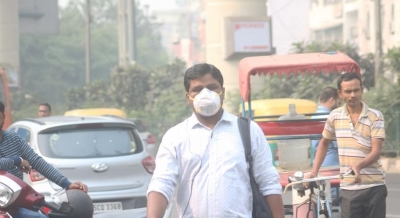Preventive cure tips to cope up with Delhi smog
By IANS | Updated: November 6, 2020 11:45 IST2020-11-06T11:32:04+5:302020-11-06T11:45:11+5:30
New Delhi, Nov 6 When you think of North India's winter, what's the first thing that comes to ...

Preventive cure tips to cope up with Delhi smog
New Delhi, Nov 6 When you think of North India's winter, what's the first thing that comes to your mind? Most people would say the fog.
Fog is a low-lying cloud where accumulation of water takes place from local water bodies. Fog rarely lasts longer after sunrise and has no major ill effect other than reduced visibility. However, it is when this fog is mixed with pollutants to form 'smog' that it becomes dangerous for your health.
The main reason for the formation of smog is the increasing air pollution. Air pollutants from cars and Diwali crackers like sulphur dioxide, nitrogen dioxide and various industrial pollutants like carbon monoxide, volatile organic compounds, ozone and particulate matter mix with fog to form a dense layer in the atmosphere called smog, explains Dr. Sandeep Jassal, Alternative Medicine, who also consults on Practo.
Facing a worse spell of persistent smog again this year, Delhi and its NCR region's air quality has slipped to 'hazardous' levels. As a result, stepping out even for the shortest periods of time can have effects like headache, nausea, breathlessness, burning in eyes etc. for Delhi residents.
Who is at the most risk from the smog?
Children
Adults who are active outdoors
People with respiratory diseases
People with unusual susceptibility to ozone
How does smog affect the human body?
Smog can be responsible for any ailment from minor pains to deadly pulmonary diseases such as lung cancer. The effects also include-
Coughing and throat or chest irritation: High levels of ozone irritate your respiratory system. They usually last for a few hours after you've been exposed to smog. However, ozone sometimes continues to harm your lungs even after the visible symptoms disappear.
Worsening of asthma symptoms: If you suffer from asthma, exposure to high levels of ozone from smog can trigger severe asthma attacks.
Difficulty breathing & lung damage: Smog can make it feel difficult to breathe deeply, especially during exercise. This is because of the effects of ozone on lung function.
Preventive measures to follow:
Stay indoors as much as possible.
Avoid taxing physical activity.
Wearing masks while stepping out
( With inputs from IANS )
Disclaimer: This post has been auto-published from an agency feed without any modifications to the text and has not been reviewed by an editor
Open in app